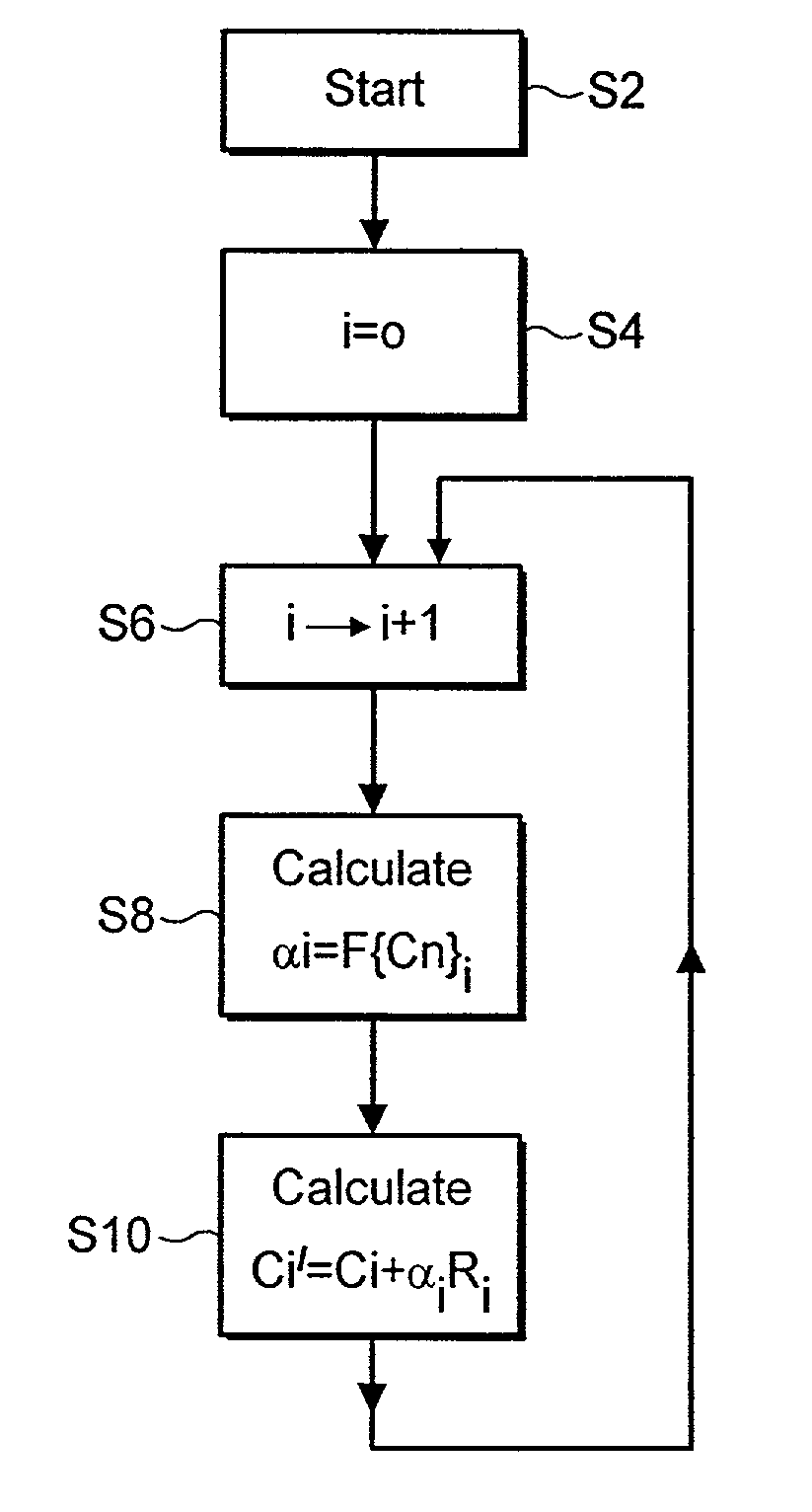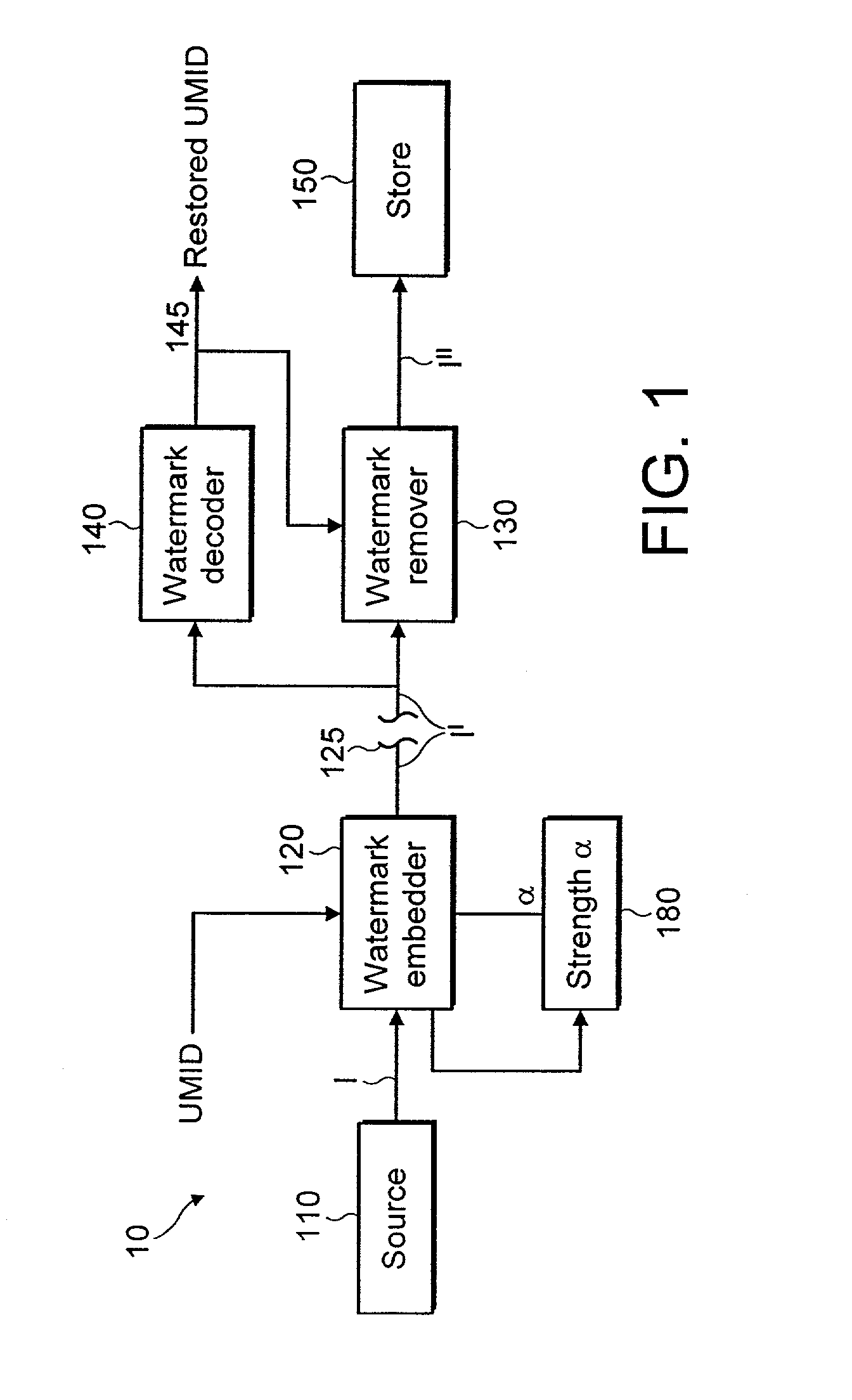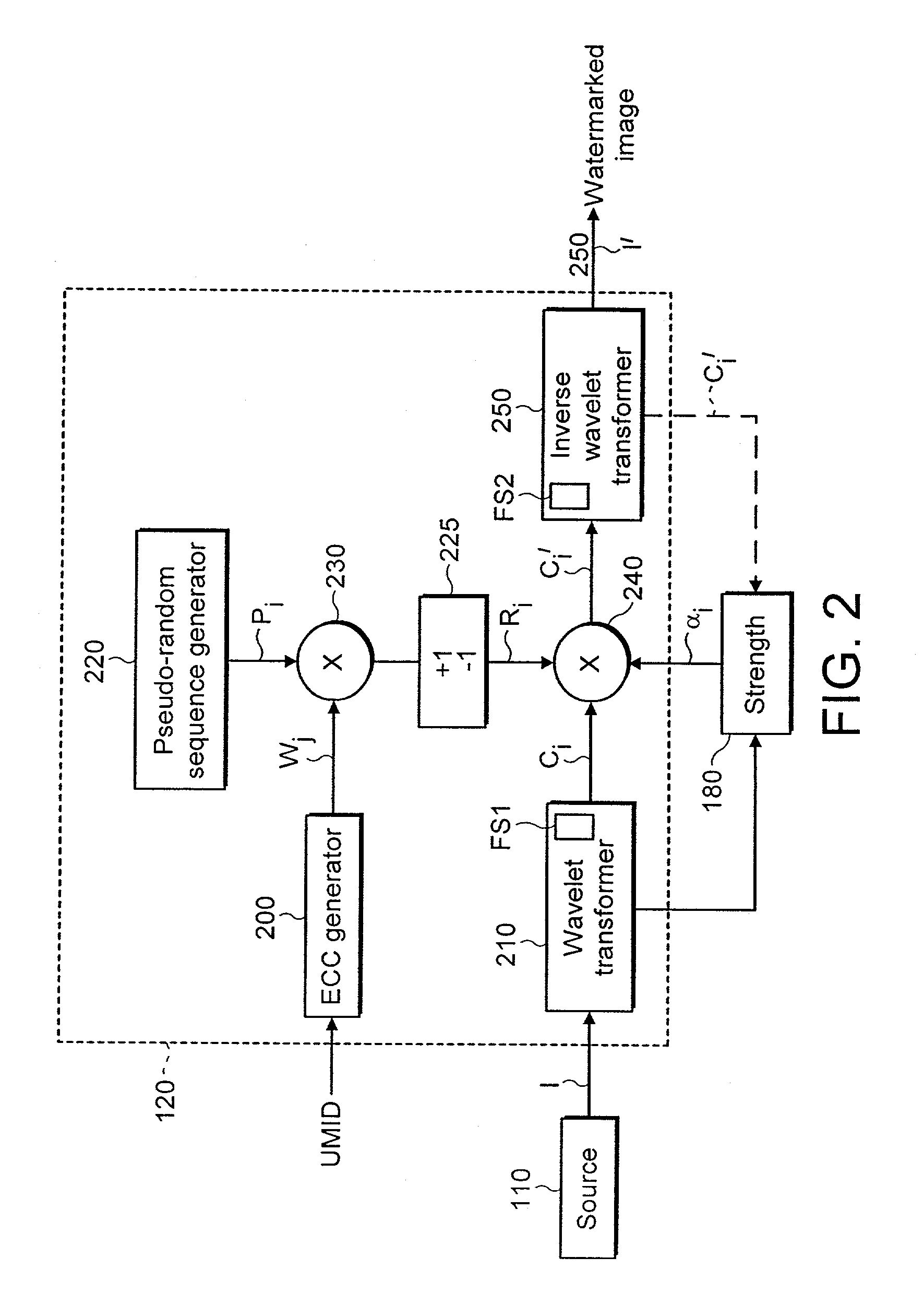Embedding data in material
a technology of embedded data and material, applied in the field of embedded data in material, can solve the problems of difficult removal of embedded data from material, easy damage of embedded data, fragile watermarks,
- Summary
- Abstract
- Description
- Claims
- Application Information
AI Technical Summary
Benefits of technology
Problems solved by technology
Method used
Image
Examples
first example
[0155]Referring to FIG. 10, the source 110 produces a spatial domain image I. An embedder 120 receives a UMID from a generator 115 and embeds the UMID as the watermark in wavelet coefficients Ci of a wavelet transform (T) of the image according to
Ci′=Ci+α.Ri
[0156]where Ci is the i′″ original image coefficient. Ci is the ith modified coefficient, Ri is ith bit of watermark data and α is a scaling factor. As described hereinafter Ri may be a bit of a pseudo random symbol sequence modulated by the UMID data Wi.
[0157]The remover 130 removes the watermark to produce restored coefficients Ci″ according to
Ci″=Ci′−α.Ri
[0158]A comparator 125 compares the restored coefficients Ci″ with the original coefficients Ci to determine any differences and the locations thereof. The differences and locations i are stored in the database D as correction data together with the UMID generated by generator 115.
[0159]The coefficients Ci′ produced by the embedder 120 are inverse transformed (T−1) and appli...
second example
[0163]The second example is identical to the first except that a channel emulator 121 is provided between the embedder 120 and remover 130. The emulator applies, to the output of the embedder, a channel emulator function emulating the effect of channel C on the output of the embedder.
[0164]The channel emulation 121 emulates the channel C. Thus errors introduced by the channel C can be detected and corrections stored in the database D.
[0165]This is useful especially if the channel C is lossy.
third example
[0166]This modifies the first or second example in that ∀ is not fixed. The embedder 120 is shown in FIG. 11 and the remover 130, 127 is shown in FIG. 12.
[0167]FIG. 11 is identical to FIG. 2 described above except that it has a connection supplying the wavelet coefficients Ci to the comparator 125 of FIG. 10. Likewise, FIG. 12 is identical to FIG. 6 above except it has a connection supplying the restored coefficients to the comparator 125 of FIG. 10. Thus no further description is needed of FIGS. 11 and 12.
Modifications
[0168]Whilst the aspect of the invention described with reference to FIGS. 10 to 12 embeds and removes watermarks as described with reference to FIGS. 1 to 9, other watermark embedding and removal techniques may be used.
Wavelets
[0169]Wavelets are well known and are described in for example “A Really Friendly Guide to Wavelets” by C Valens, 1999 and available at http: / / perso.wanadoo.fr / polyvalens / clemens / wavelets / wavelets.html.
[0170]Valens shows that the discrete wavel...
PUM
 Login to View More
Login to View More Abstract
Description
Claims
Application Information
 Login to View More
Login to View More - R&D
- Intellectual Property
- Life Sciences
- Materials
- Tech Scout
- Unparalleled Data Quality
- Higher Quality Content
- 60% Fewer Hallucinations
Browse by: Latest US Patents, China's latest patents, Technical Efficacy Thesaurus, Application Domain, Technology Topic, Popular Technical Reports.
© 2025 PatSnap. All rights reserved.Legal|Privacy policy|Modern Slavery Act Transparency Statement|Sitemap|About US| Contact US: help@patsnap.com



